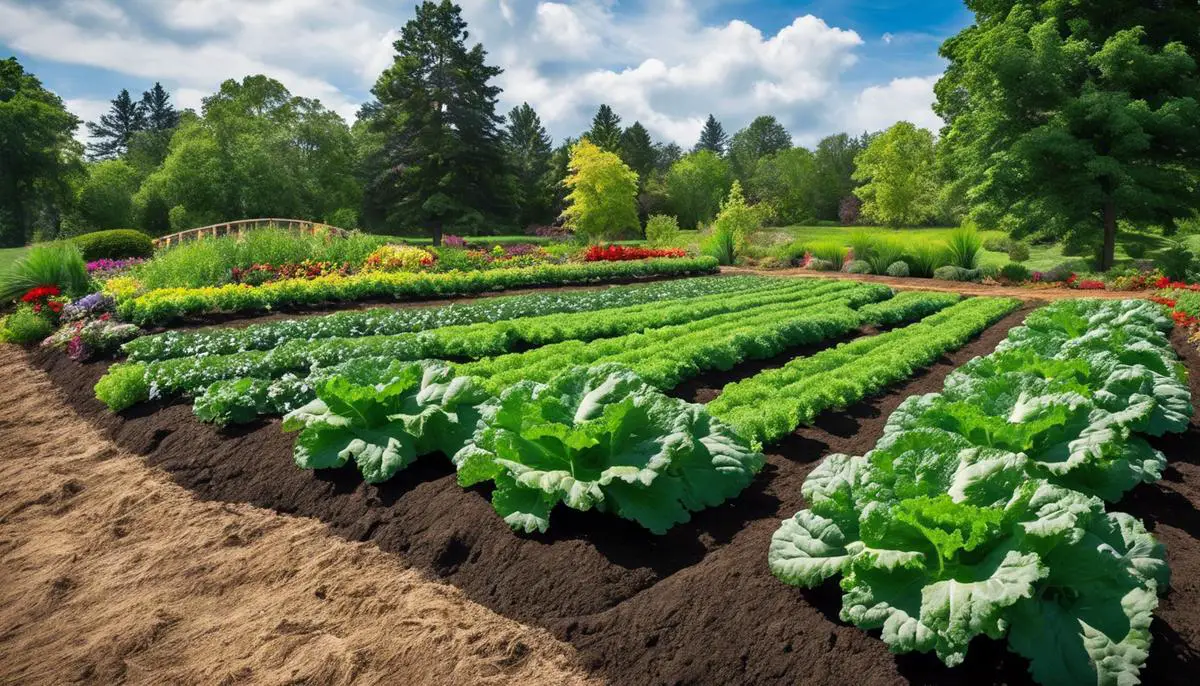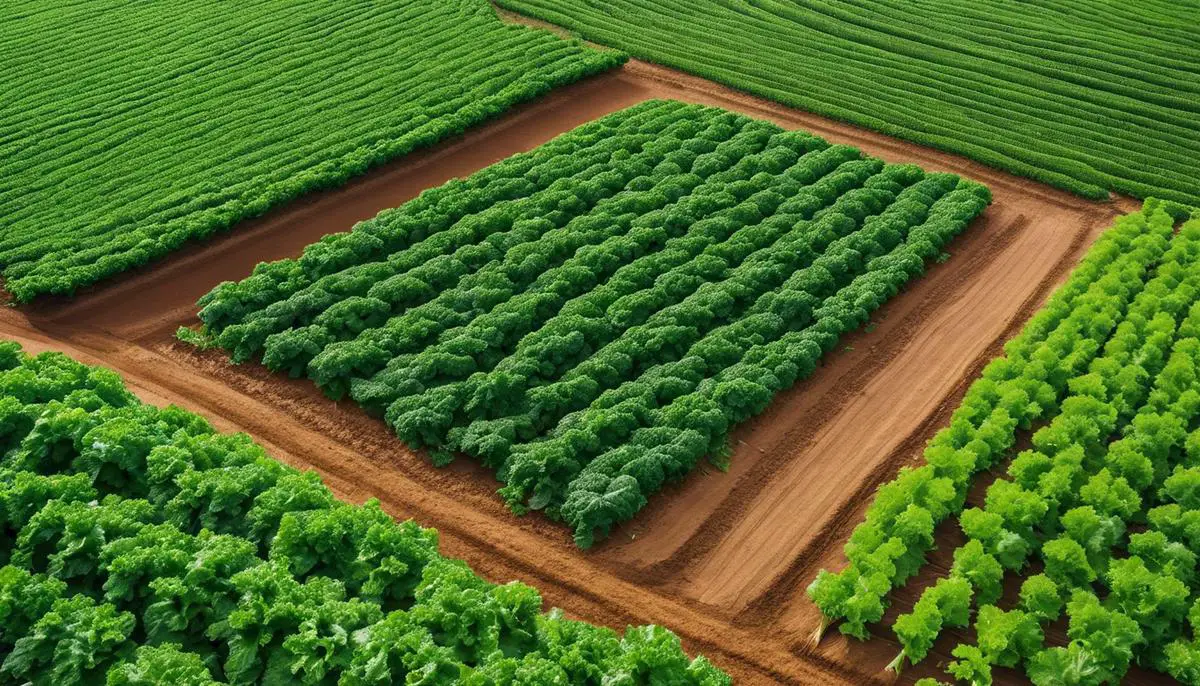Growing kale, a nutrient-packed leafy green, requires more than just placing seeds in the ground; it begins with a profound understanding of the soil beneath your feet. Beginning gardeners and experienced growers alike must learn to decipher the language of soil properties, as they play a pivotal role in the health and productivity of kale plants. With a focus on the principles of ideal pH levels, precise soil texture, and balanced nutrient content, this exploration dives into the practical ways to test and enhance your garden bed. The journey of nurturing kale from seed to harvest is intimately tied to the nurturing of the soil it grows in. Let’s embark on this educational odyssey to transform an ordinary patch of earth into a fertile cradle for vibrant kale leaves.
Analyzing Soil Properties
The Agronomic Foundation for Cultivating Brassica Oleracea Var. Sabellica: An Examination of Soil Properties for Optimal Kale Growth
The cultivation of kale, scientifically known as Brassica oleracea var. sabellica, demands attention to specific soil properties to ensure a successful harvest. The species is highly regarded for its nutritional benefits and adaptability to diverse climatic conditions, yet it is the soil ecosystem that ultimately dictates the vitality and yield of this leafy green. As we embark on an exploration of the fundamental soil properties for kale cultivation, we must delve into texture, pH, fertility, drainage, and organic matter content.
Reader Poll: What online courses would interest you?
1. Soil Texture: The Framework of a Fertile Environment
Kale thrives in well-drained soil with a loamy texture. Loam, characterized by a balanced mix of sand, silt, and clay particles, provides an optimal structure for root growth and water retention. A loamy soil facilitates adequate air circulation while preventing waterlogging, which can lead to root diseases. The ideal texture promotes the unhindered expansion of kale roots, allowing efficient access to nutrients and moisture.
2. Soil pH: The Chemical Equilibrium
The pH level of the soil, a measure of its acidity or alkalinity, plays a critical role in nutrient availability. For kale, a soil pH ranging between 6.0 and 7.5 is optimal. This slightly acidic to neutral range ensures the maximum availability of essential nutrients, particularly nitrogen, phosphorus, and potassium, which kale requires in ample quantities. Periodic soil testing to monitor pH levels is advisable to maintain this narrow window, employing lime to raise pH or sulfur to lower it as needed.
3. Soil Fertility: The Nutrient Reservoir
Kale is recognized for its heavy feeding nature, necessitating a soil rich in essential nutrients. A high level of fertility is paramount, with a particular focus on nitrogen for leaf development, phosphorus for root formation, and potassium for overall plant vigor. Prior to planting, a comprehensive soil test can guide the amendment process, ensuring the incorporation of a balanced fertilizer to satisfy the kale’s nutrient demands.
Subscribe to our newsletter!
4. Soil Drainage: The Hydrological Balance
Effective drainage is indispensable for kale, curtailing the risks associated with excess moisture. While kale requires consistent moisture levels, stagnant water can foster fungal diseases and impair root function. A well-draining soil profile, perhaps enhanced with organic amendments or constructed raised beds, ensures that moisture levels remain uniform.
5. Organic Matter: The Sustenance of Soil Life
Incorporation of organic matter into the soil enhances its structure, fertility, and water-holding capacity. Compost, well-decomposed manure, and other organic materials enrich the soil web, introducing beneficial microorganisms that support plant health. A robust organic matter content, ideally exceeding 5%, is fundamental for sustaining a continual supply of nutrients and promoting resilient kale crops.
Expanding our comprehension of soil dynamics and their influence on Brassica oleracea var. sabellica is an ongoing endeavor in agronomic sciences. A meticulous application of scientific principles in assessing and ameliorating these pivotal soil properties provides a firm foundation for cultivators aiming to optimize the growth of kale within their agricultural systems.

Preparing the Soil
Cultivating the Perfect Bed for Kale Cultivation
In the pursuit of horticultural excellence, particularly in the cultivation of Brassica oleracea var. sabellica, commonly known as kale, due attention must be paid to the crucial pre-planting phase of soil preparation. Preparing soil for the forthcoming kale plants is neither an art nor a mystery but rather a scientific endeavor that involves a series of calculated steps to provide the optimal growing conditions.
Amendments and Enhancements: Tailoring the Soil Composition
Following the establishment of soil texture, pH, fertility, drainage, and organic matter content, one must consider the specific amendments necessary to tailor the soil composition for kale cultivation. Kale plants thrive in soil enriched with a balanced blend of nitrogen (N), phosphorus (P), and potassium (K). Incorporating a well-balanced, slow-release fertilizer with a ratio close to N-P-K values of 3-2-2 can substantially benefit the latent potency of the soil.
Calculating the appropriate amount of fertilizer requires a soil test—a reliable indicator of the current nutrient status. This should guide the precise application rates, ensuring that the soil’s natural fertility is bolstered without oversaturation, which can lead to nutrient leaching and potential environmental harm.
Tilling: Creating a Receptive Seedbed
Tilling is imperative for physically preparing the soil; it promotes aeration, disrupts weed growth, and integrates prior amendments evenly. A depth of 8-12 inches is typically sufficient to establish a loose and friable seedbed conducive to kale root development. However, caution is advised to avoid excessive tilling, as it can disrupt soil structure, harm beneficial microbiota, and accelerate organic matter decomposition.
Water Management Pre-Planting
Before sowing kale seeds or transplanting, pre-moistening the soil is advised to ensure a welcoming environment for seed germination and root establishment. A thorough, even watering that saturates the tilled depth sets a baseline for moisture levels, aiding in the acclimatization of young kale plants with regard to the soil’s water retention characteristics.
Mulching: A Protective Overlay
After planting, a final consideration is the application of mulch. A layer of organic mulch, such as straw or shredded leaves, can aid in moisture retention, temperature regulation, and weed suppression. It should be applied to the soil surface around the kale plants, taking care not to cover them, with a thickness of roughly 2-3 inches. The mulch will gradually decompose, contributing to the soil’s organic matter content and promoting a healthy soil ecosystem.
Through these meticulous preparations, the soil will be suitably equipped to support the vigorous growth of kale, facilitating an environment where both the plants and the organisms within the soil can engage in a symbiotic exchange—each thriving from the presence and processes of the other.

Maintaining Soil Health
Conserving Soil Moisture and Enhancing Soil Structure
In the cultivation of kale, a crop with considerable nutritional significance and culinary versatility, maintaining optimal soil moisture is of paramount importance. An adequate supply of water is crucial for kale, as it supports the physiological processes vital for growth, including nutrient uptake and photosynthesis. The retainment of soil moisture is achieved not only through judicious irrigation practices but also through the judicious use of mulches. Organic mulches, such as straw or wood chips, serve a dual purpose by decreasing evaporation rates and concurrently improving soil structure. Over time, these mulches decompose, contributing to the soil’s organic matter content, thus enhancing its water-holding capacity and fostering a more robust soil structure cardinal for the root development of kale.
Crop Rotation: Diversifying Plantings to Sustain Soil Vigor
To maintain the health of soil and reduce reliance on chemical disease and pest controls, a considered system of crop rotation should be instituted. The practice of rotating kale with unrelated crops can interrupt the cycles of pests and diseases that are host-specific, therefore ameliorating soil health and reducing the potential for crop losses. For example, following a brassica such as kale—which is susceptible to pests like cabbage root fly and diseases such as clubroot—with a non-brassica species can create an unfavorable environment for these kale-specific afflictions, thus preserving the integrity of the soil for subsequent growings.
Integrated Pest Management: Aligning with Soil Health Objectives
Another crucial aspect for the maintenance of soil health is the implementation of integrated pest management (IPM) strategies. Divergent from conventional pest control methods that may inadvertently affect non-target organisms and soil ecology, IPM emphasizes the employment of biological control agents, cultural practices, and, when necessary, select use of chemicals with minimal disruption to soil biota. The judicious and informed application of such methods can significantly enhance the soil’s biological activity and health while controlling pests that may compromise kale yields.
Monitoring and Replenishing Soil Nutrients Throughout the Season
Regular monitoring of soil health through soil testing is advocated to determine the need for additional nutrient inputs throughout the kale growing season. Dependent on the initial soil fertility and the nutrient requirements of the kale, additional fertilizer applications may be warranted to ensure the availability of critical nutrients such as nitrogen, phosphorus, and potassium during key growth stages. It should be noted that an excess of these inputs can lead to nutrient leaching, and the diminishment of soil health; therefore, the accurate calibration of nutrient applications to match plant needs is imperative.
Biodiversity Enhancement: The Keystone of Sustainable Soil Management
Last, the enhancement of aboveground and belowground biodiversity represents a crucial aspect of soil health management. Practices such as intercropping or companion planting with species that offer mutual benefits can not only improve crop resilience but also bolster belowground biodiversity which is essential for nutrient cycling and soil structure. The presence of diverse soil microorganisms, including bacteria, fungi, and other beneficial organisms, is a hallmark of a healthy soil environment. These microorganisms play a critical role in organic matter decomposition, soil nutrient availability, and the overall sustainability of soil as a growing medium.
In summary, the health of soil in kale cultivation is maintained not by singular actions, but by an interconnected web of practices that uphold the structural, chemical, and biological integrity of the soil environment. Rigorous attention to soil moisture conservation, crop rotation patterns, IPM, nutrient management, and biodiversity form the best practices, which concomitantly ensure that the soil remains a robust foundation for the growth and productivity of kale throughout the season.

The symphony of soil preparation, enrichment, and conservation we have discussed not only nurtures kale but also fortifies the garden ecosystem for future growing seasons. Through the meticulous care in tilling and the devoted additions of organic matter, we create a sanctuary where kale can thrive. Embracing the cyclical wisdom of crop rotation and the gentle support of organic fertilizers, we stand as stewards of the land, fostering soil that brims with life and vitality. As your kale leaves unfurl towards the sky, remember that each one is a testament to the health of the soil—a mirror reflecting the quality of your efforts and the promise of nature’s bounty.

